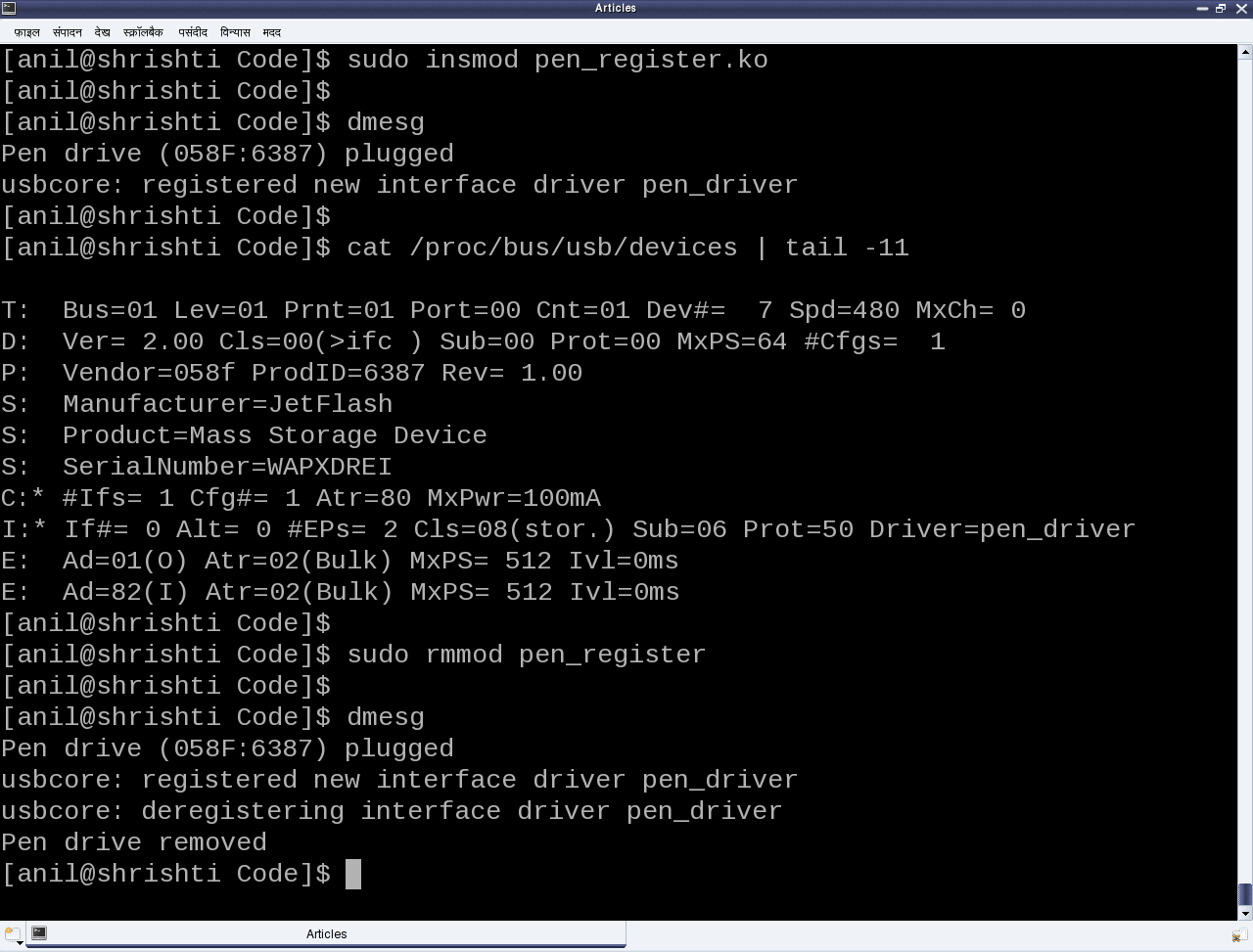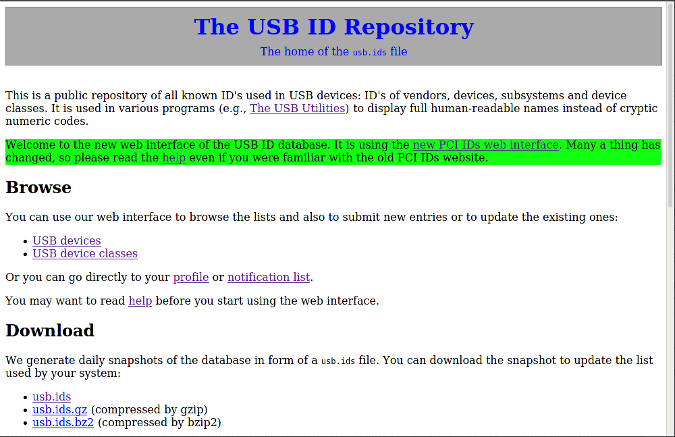

Of interest here is that such Device IDs can be entered into your favorite search engine.


and the subsystem device (the actual USB device or USB software emulator by that vendor) is a keyboard. So, for example, the Holtek Semiconductor device with USB device ID 04d9:1203 has 04d9 which is associated with Holtek Semiconductor, Inc. The first part (before the :) is a USB devices vendor identifier, associated with a specific vendor, and the second part is a subsystem USB device number. Note that the USB Device ID has two parts. Here we first see the USB Bus (a computer/system bus is a transport mechanism the customer uses, just like a bus in real life, to transport data from one item to another, for example, from a USB device – like a mouse or keyboard – to the processor) number, followed by a device number, a USB Device ID and finally a textual description of the device. When you first run lsusb from a Terminal command prompt, you will get a brief/concise list of output, showing various items of information about the USB devices in your system: lsusb To access the command prompt, if you are using a desktop GUI, you will often have to click your operating system’s action button (like the green button commonly at the bottom left in Linux Mint or the Activities button at the top left in Ubuntu) and type Terminal and click the corresponding option, or you may like to try the Windows key on your keyboard in combination with the letter T (hold the Windows key, then press T). You can access the complete but small lsusb manual by issuing man lsusb at a Terminal command prompt. The only way to remove it completely from a system would be to use sudo to remove ( rm) the actual binary (commonly at /usr/bin/lsusb) and the manual (commonly at /usr/share/man/man8/lsusb.8.gz).

It will work on desktops, servers, and other common Linux-running hardware like Raspberry Pi’s, etc.Īs the tool is installed by default, there is no need to install it, and it cannot be uninstalled. Lsusb is a command-line tool in Linux, installed by default as part of your (modern) Linux Operating System, which can list and enumerate all USB devices, including USB hubs found within the system on which it is being executed. The lsusb will list all USB devices in a system and USB hubs and provide detailed information on each of them. Learn how to use the lsusb tool in Linux with a practical example.


 0 kommentar(er)
0 kommentar(er)
